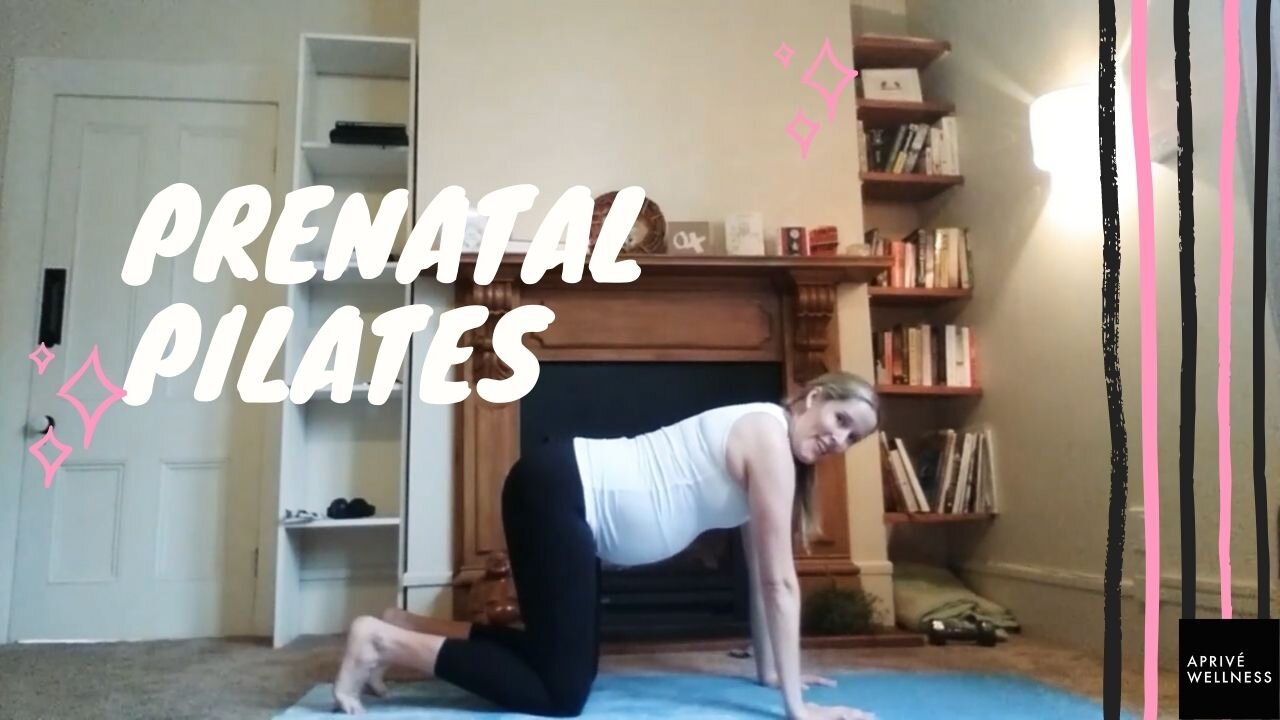
Aprivé Wellness Blog
Science Meets Holistic Health
Our retreat on January 16th blends evidence-based science with calming holistic medicine to help inform the health and wellbeing choices of people just like you.
See the day's inspiring schedule below, and book online now! http://www.aprivewellness.com/queenstownwellnessretreatjan…/
Health & Fitness: Wellness Industry Shakeup of 2015
Phew! 2015 was a big year for health and wellness. Let's look back at the year and check out the best innovations from this rapidly growing and hugely profitable industry.
Are gym workouts a thing of the past?
This year, workouts like Barre and Soulcycle continued storming the market.
They've developed loyal fan bases thanks to their ability to make health and wellness fun, motivational and inclusive.
The classic gym workout is almost a thing of the past, which is why hotels are offering more flexible, strategic wellness ideas too.
Innovative hotel wellness strategies
Westin hotels now offer local running maps, superfood menus and even thoughtful business amenities to help you move, eat and work well while you’re away. At the Intercontinental, Bruce Ryde told Welltodo London “We want our guests to leave feeling relaxed, rejuvenated, and stress-free. Many of our hotels now offer full service fitness centres that are open 24 hours a day so guests can easily fit a workout into their schedules.”
W hotels now have a unique partnership with Strala Yoga founder and yogi extraordinaire Tara Stiles to enhance their wellness offerings. “We’ve created an energetic program designed to celebrate the body and provide 24/7 access to an interactive workout that can easily be incorporated into the busiest of jet-setting lifestyles,” says Paul James, Global Brand Leader, W Hotels.
Personalised wellness products
What’s different in the world of wellness now though, is personalisation. Brands are recognising everyone’s different, and everyone has unique goals. Corinna Yap COMO Shambhala Manager at Metropolitan by COMO, Old Park Lane, explains to Welltodo “We understand everyone has a different relationship with wellness, so we think about the little details.”
Hotels aren’t the only ones jumping on board the profitable wellness trend, that sees wellness tourists spending around 130% more than regular tourists. The Global Wellness Summit has tipped airports to join in by offering innovative strategies too.
Thankfully, after encouragement from those of us who blend wellness with our medical backgrounds, many wellness strategies are being backed by science. The Global Wellness Summit even has an evidence-based medicine portal for wellness therapies where anyone can read the latest evidence on anything from acupuncture to weight loss.
By offering a delicate balance of holistic medicine and science, brands have created relatable wellness products that are more trustworthy and reliable.
What I learned as a Wellness Professional in 2015
After launching Aprivé Wellness in 2015 from years of experience, I can say I’ve learned just how important wellness is to many people thanks to the overwhelmingly positive response to my brand. As a physiotherapist and wellness professional, my mission is to make wellness fun and inspiring and all the products I design utilise evidence-based science to help inform the health and wellbeing choices of people like you.
I’m so incredibly excited to see how the wellness industry continues to develop in 2016, and I look forward to building new partnerships with amazing people and brands to help innovation, evidence and inspiration become regular features of worldwide wellness.
Thank you so much for all your support in 2015, and Merry Christmas and Happy holidays to you all!
-Caitlin xo
Wellness Retreat & Consulting Brand Official Launch
I wrote about our company's launch in my column for Queenstown.com - so it's 100% official - Aprivé Wellness is up and running and already changing the landscape of wellness. Yay!
My mission is to make wellness fun and inspiring; plus share evidence-based science to help inform the health and wellbeing choices of people like you.
I'm no hardcore health nut, but I do have years of education, lifestyle and industry experience to know what health tips are proven and reliable, and which are just passing trends.
I'm so excited to officially launch Aprivé Wellness Ltd. and thank you to everyone who has helped this day happen from my lovely retreat guests to friends, family and mentors in the Physiotherapy and Wellness world.
At Aprivé Wellness, we have some special projects underway, so subscribe to my list so you'll be the first to know!
Thank you for all your support - Have a happy day!
What causes running injuries?
If you run for fun and fitness, you've probably experienced an injury of some sort. Not something serious needing surgery or time off work, but an injury that makes you take it easy for at least a week. If you've had an injury, you may have discovered what caused it; like a sprained ankle from stepping off a curb wrong, but you may also be a bit bewildered. I've had so many clients who have torn their hamstring from running the same track they run everyday. They're confused and frustrated, and they always ask: Why did this happen today?
What are the most common injuries in women who run?
• Plantas fasciitis
• Knee pain/ITB friction syndrome
• Ankle sprain
• Hip pain
• Calf tear
• Hamstring insertion tear
A common question I get asked is: Why do we get injured?
Many runners run the same tracks, similar distances and in the same footwear, yet get injured, seemingly randomly. However! It turns out these injuries are far from random. Below are the most common reasons for injury in runners…
1.) Sudden changes in training causes injury
One of the main causes of running injuries is rapid alterations in training frequency, duration and intensity.
Why? Your muscles haven’t developed the endurance strength required, leading to increased fatigue, poor foot placement, decreased pelvic stability and eventually….injury.
Let’s look at a scenario. You usually run three times a week, for 10kms, along a flat trail. In 4 months you have enrolled in a 21km mountain run. How do you change your training without injury?
How to train for a half marathon
a. Frequency: Start training by adding a shorter run, an additional day per week. Don’t try running six days, straight away! Fatigue and DOMS (delayed onset muscle soreness) will be far too much for your body and you'll end up injured.
b. Duration: Running for 1.5 hours, three days a week is where you’re at - so increase by increments of ten minutes per fortnight. You’ll be at 21kms in no time, but don’t force it straight away.
Overuse injuries are most common in runners with sudden increases in training duration. Shin splints? No thanks!
Hill Running
c. Intensity: This is the clincher. You may wake up feeling energised and stronger than ever one morning, but don’t be tempted to sprint up the biggest hill you can find. Running uphill puts huge stresses on the achilles tendon and hip flexors. When they’re not conditioned for hill running, the excessive loading and propulsion forces lead to tendonopathies (tendon conditions) and inflammation.
Running downhill
Don't try sprinting downhill straight away, and don't choose a hill with a huge incline. Running downhill requires huge concentric (shortening) contraction force through the quads, plus lengthening through the hamstrings. Avoid knee pain by slowly and gently increasing your hill training with small increments of incline, length and speed.
You will reach your goal, just remember to do it steadily. If you’re still unsure, contact a trainer or running program specialist. They will help you, step by step, to prepare for your event.
What else causes injuries?
2.) Long Distance Running
Recent studies have found those who run greater than 40 miles per week tend to be injured more. 40 miles? That’s almost 65 kms!
Plenty of people run long distances frequently without injury, but understanding the huge biomechanics demands of long runs is important. A lot of Physiotherapists and Kinesiologists are also running coaches, so get in touch with a reputable Physio to help keep you running safely.
3.) One time runners
Women who run once a week or less are more likely to be injured than those who run frequently. Don’t be discouraged if you’re an occasional runner. Ensure you do a correct warm up, and indulge in strengthening during the week. This can be yoga, pilates, aerobics classes, dancing, rpm - anything that encourages lower leg strengthening! Be keeping your hips and core strong, your biomechanics will be at their best, making you less likely to get injured when you run.
If you're injured right now, you're probably frustrated and really 'over it.' I've treated so many people with injuries and I wanted to share what I've learned along the way. Check out this handy article: The key to injury recovery .
Have you ever had a running injury?
Accidental IBS: Linking digestion and stress
Our busy lifestyles of urgent deadlines, unmanageable commitments to family and friends and unhealthy diets are making modern society accidentally anxious. This anxiety is wreaking havoc on our digestion.
Without realising it, the way we live is causing biochemical changes in our bodies, including the overproduction of adrenaline.
Adrenaline and stress
When you're stressed out, your body produces adrenaline to help you prepare fight or run from the threat. This response comes from your nervous system, and evolved to help us outrun sabre tooth tigers and battle our neighbours for food and shelter. In modern life though, we don't (often) need to fight or run when we're stressed, so adrenaline pulses through out body, leaving us wired.
Adrenaline and your body
Everyone knows the feeling of adrenaline pulsing through your body; whether you've tried bungy jumping or you love ordering a venti coffee with 5 shots of coffee.
Adrenaline makes you wired; your blood pressure rises, your muscles fill with more blood, and the blood flow to your intestines slows.
Did you know? Adrenaline slows the blood supply to your digestive organs.
Sluggish digestion from stress
Breaking down food is hard work, and it takes energy and power to do it. With excessive adrenaline pulsing through your body, your poor digestive system is expected to work without a good blood supply. Peristalsis, the fancy word for the movements and contractions of the intestines to help move food along, is also slowed by adrenaline. Your digestion becomes sluggish, and some harder-to-digest foods can sit in your digestive tract for too long, emitting gas causing bloating and stomach pain.
How to treat IBS
Stomach pain and irritable bowels can be caused by too much adrenaline pulsing through your veins thanks to stress rather than just the foods you eat.
So before you scrap spicy food from your diet, there are a few things you can try to lower your stress levels, decrease the over-activation of your sympathetic nervous system, and decrease the adrenaline in your body:
- Try 5 long exhales 3 times a day- Deep breathing is proven to activate your 'Rest & Digest' system instead of your 'Fight or Flight' system.
- Try avoiding stimulants like coffee around meal times
- Try to avoid stressful situations (eg. a meeting with a difficult client) when your digestive system needs extra help like after lunch.
- Gentle exercise can help with digestion, so try a walk to clear your mind, and help your process your food after lunch.
- If you're eating at your desk, try deep breaths between bites, and avoid reading work or stressful emails during your break.
How to manage stress
If you need help finding effective but realistic ways to combat stress in your life, I'd love to help you.
Have a happy day!
-Caitlin xo
Healthy Recipe: Peanut Butter Tofu
Gluten Free Vegan recipes
If you're gluten free like me, and you're trying to eat less meat, it can be tricky to find interesting recipes. This is one of my absolute favourites and even my friends who hate tofu love it! It's rich and beautifully creamy, perfect with fried rice for a hearty winter meal, or with an asian salad for summer.
Peanut Butter Tofu Recipe
Tip: Don’t forget to check your ingredients for gluten, as some peanut butters and sauces can have glucose or maltodextrin derived from wheat or barley. Look for maltodextrin or glucose derived from maize instead.
You’ll need:
500g packet of of white tofu
1/4 tamari or gluten free soy sauce
2 tbsp peanut butter
chilli flakes
3 tbsp brown sugar
5 tsp sesame oil
Mix your ingredients together to form a sauce, apart from the tofu.
Cut the tofu into small squares the size of a teaspoon and sauté until brown (about 10 minutes)
Once you've cooked the tofu, pour your sauce over the tofu like a marinade (You can always add more if you want a saucier dish)
Let the mixture sit for 20 minutes
Once the tofu has taken on the colour of your mixture, add some olive oil to a pan and sauté the tofu again until the mixture turns a dark, honey brown.
After about 5 minutes in the pan, you're good to go!





















Learn when it’s safe to start walking after a C section, how to ease back into movement, and what to expect in your recovery timeline.